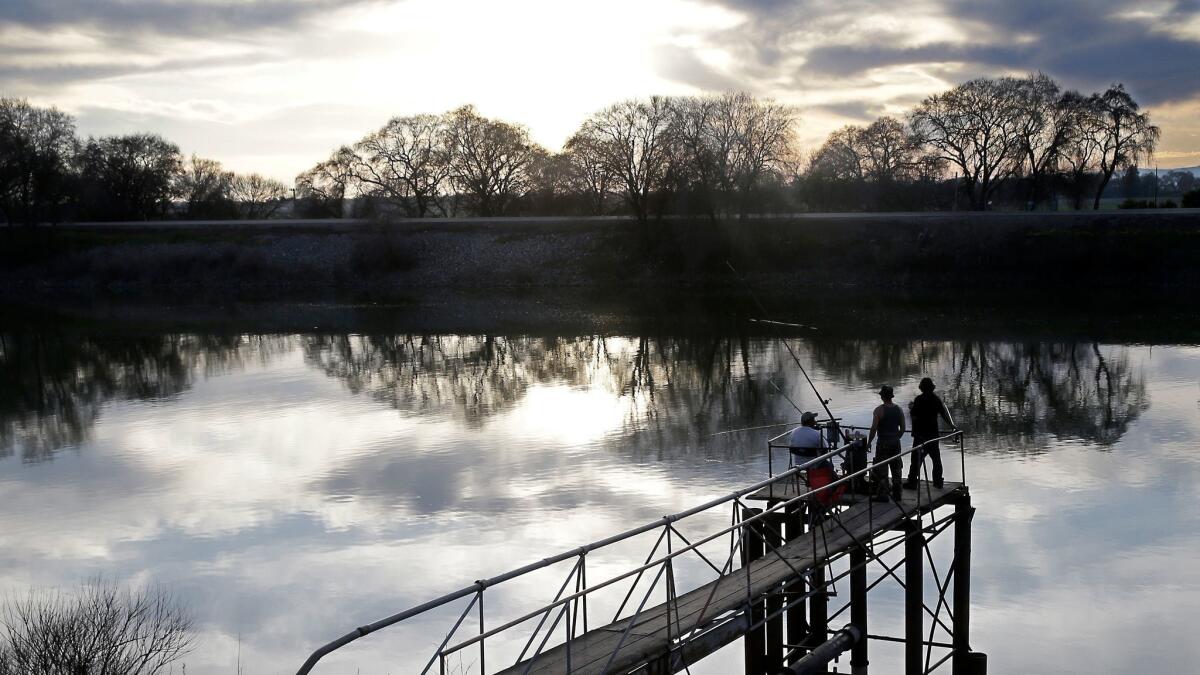Editorial: If the feds wonât protect our water, California has to do the job itself

President Trumpâs directive to roll back key protections for the nationâs waters helps to crystallize Californiaâs challenge in the Trump era â and points the way toward a workable strategy for preserving and promoting the stateâs environmental values despite an administration that is pushing in the opposite direction.
At issue is a rule that defines the reach of the landmark Clean Water Act, the 1972 law to prevent contamination of drinking water and degradation of U.S. waterways. The law operated well for more that 30 years until a pair of Supreme Court rulings left lawyers and administrators mystified as to just what streams and other waters it covered. The Obama administration adopted a thoughtful but controversial (and widely mischaracterized) âWaters of the United Statesâ rule in 2015, but a number of states sued and implementation was blocked in court.
One of those objecting states was Oklahoma, and Trump made its attorney general â Scott Pruitt â his administrator of the Environmental Protection Agency. Last week, with Pruitt looking on, Trump signed an executive order aimed at ultimately eliminating the rule.
In doing so, the president yet again demonstrated his fluid relationship with facts, falsely asserting that the rule covers nearly every puddle and ditch and therefore treats small farmers and homebuilders as major industrial polluters.
At the same time California is going it alone, it paradoxically has to engage more than ever with the rest of the nation.
The rule did indeed make clear that the Clean Water Act covers not just the rivers and streams that flow year-round in the eastern half of the country, but also California-style waterways, like the San Joaquin River, which flow into wetlands and major bodies of water during the rainy season but go bone-dry in the summer and fall. To the present occupant of the White House, California rivers may look like ditches and wetlands may look like puddles, but we know them as the sources of our drinking water, the migratory highways for salmon and other species, and the lifeblood of our environment.
As it happens, the Clean Water Act delegates enforcement power to a number of states, including California. Itâs a different mechanism than the Clean Air Act âwaiverâ that allows California to promulgate its own, tougher, auto emissions standards. Although Trump is threatening to revoke the clean air waiver, it would be all but impossible for him to scrap Californiaâs clean water enforcement powers.
In addition, California has its own clean water law. The stateâs Porter-Cologne Water Quality Control Act was adopted three years before the federal law, and it created the State Water Resources Control Board and authorized it to make state rules if they are at least as protective of water as the federal governmentâs.
Part One of what ought to be Californiaâs strategy to weather the Trump rollbacks is for the state water board to quicken its pace in adopting rules that interpret and apply pollution standards. That hasnât been necessary until now, because the water board worked in partnership with the EPA, allowing the board to focus on the drought and related water supply and quality challenges. Now, though, with Trump planning to cut EPA funding deeply and scrap the Waters of the United States rule, the water board has to go it alone and move pollution rulemaking closer to the top of its agenda.
That, of course, will not be enough. The very essence of water protection laws and the rules that give them life is the understanding that the nationâs waters are interconnected. Polluting a seasonal creek in Wyoming, for example, may foul the Green River, which in turn affects the Colorado River, from which the entire Southwest â including Los Angeles â drinks.
So at the same time California is going it alone, it paradoxically has to engage more than ever with the rest of the nation. Part Two of the strategy must be for lawmakers and lawyers here to challenge the White House and assist, question, hear out and debate other states. Californiaâs leaders and water experts must become adept at debunking exaggerated claims that Trump adopts as gospel â for example, that the Waters of the United States rule harms farmers (in fact, the rule exempts most agriculture) or that it has cost âhundreds of thousands of jobsâ (although no one can name any job that has been lost). When necessary, Californiaâs leaders must go to court. And they must be able to present California as an example of a state that can protect its drinking water and environment while sustaining a strong economy and a thriving agricultural sector.
Follow the Opinion section on Twitter @latimesopinion and Facebook
More to Read
A cure for the common opinion
Get thought-provoking perspectives with our weekly newsletter.
You may occasionally receive promotional content from the Los Angeles Times.










